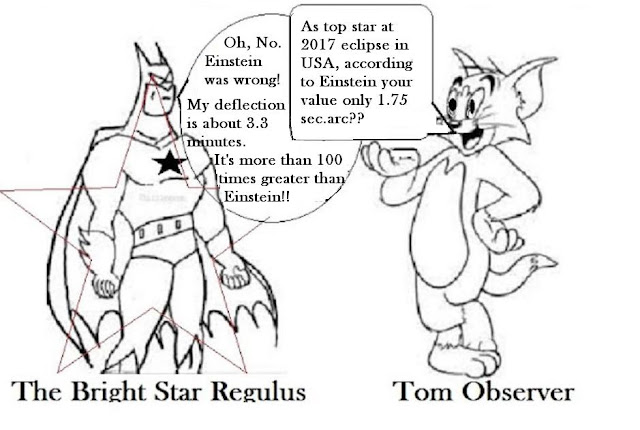Prediction at 2017 solar eclipse, August 21, in USA
The first calculation of the deflection of light by mass was published by the German astronomer Johann Georg von Soldner in 1801. Soldner showed that rays from a distant star skimming the Sun’s surface would be deflected through an angle of about 0.9 seconds of arc, or one quarter of a thousandth of a degree. This angle corresponds to the apparent diameter of a compact disc (CD) viewed from a distance of about 30 kilometers (nearly 20 miles). Soldner’s calculations were based on Newton’s laws of motion and gravitation, and the assumption that light behaves like very fast moving particles. As far as we know, neither Soldner nor later astronomers attempted to verify this prediction, and for good reason: Such an attempt would have been far beyond the capability of early 19th century astronomical instruments.
Light deflection in general relativity. Over a century later, in the early 20th century, Einstein developed his theory of general relativity. Einstein calculated that the deflection predicted by his theory would be twice the Newtonian value.The following image shows the deflection of light rays that pass close to a spherical mass. To make the effect visible, this mass was chosen to have the same value as the Sun’s but to have a diameter five thousand times smaller (i.e., a density 125 billion times larger) than the Sun’s.(www.einstein-online.info).





















